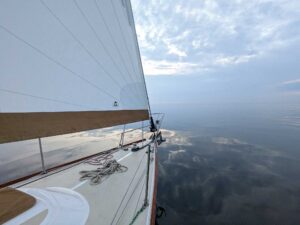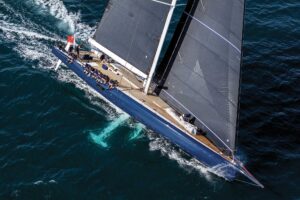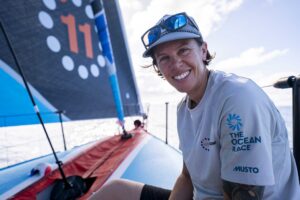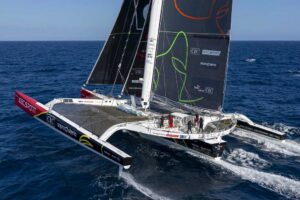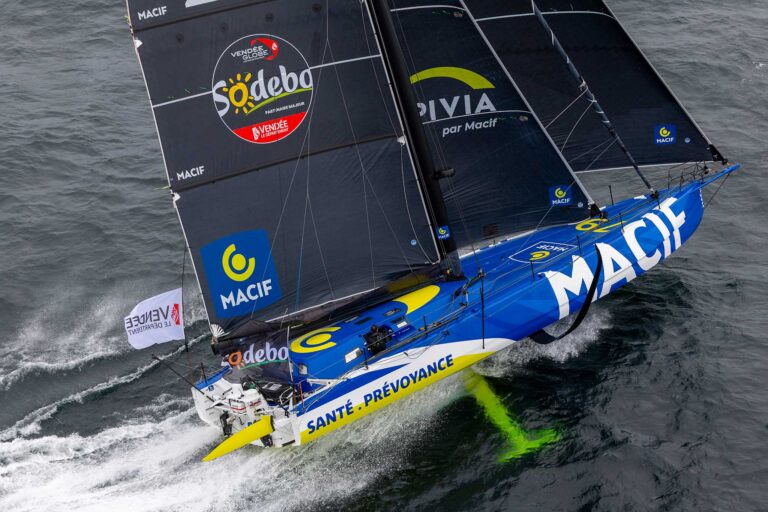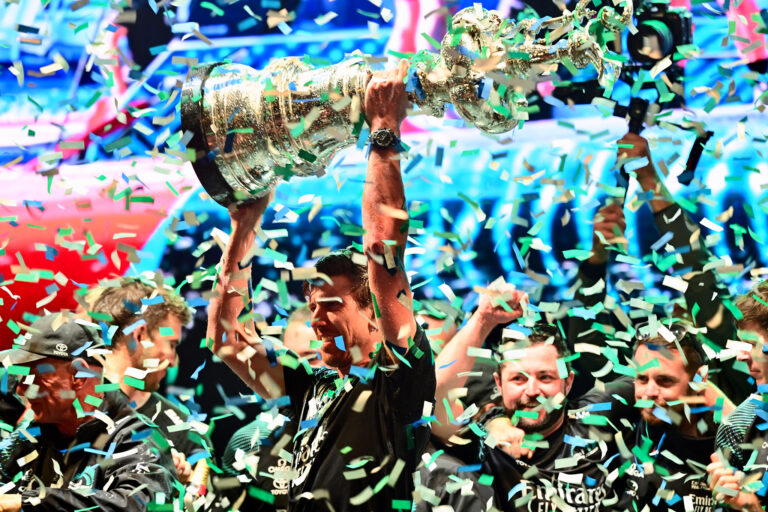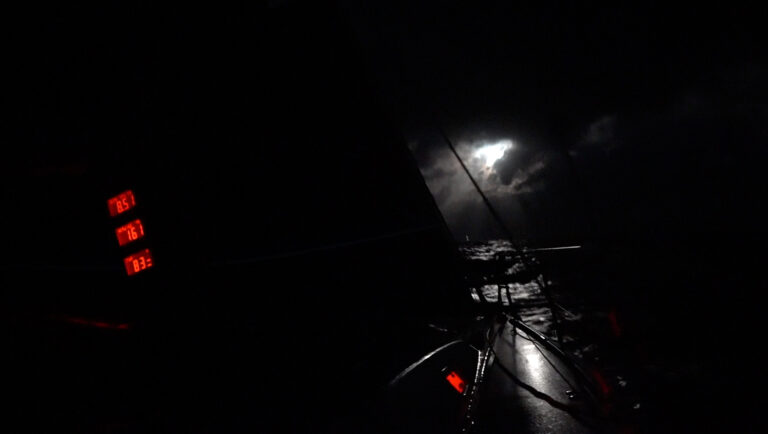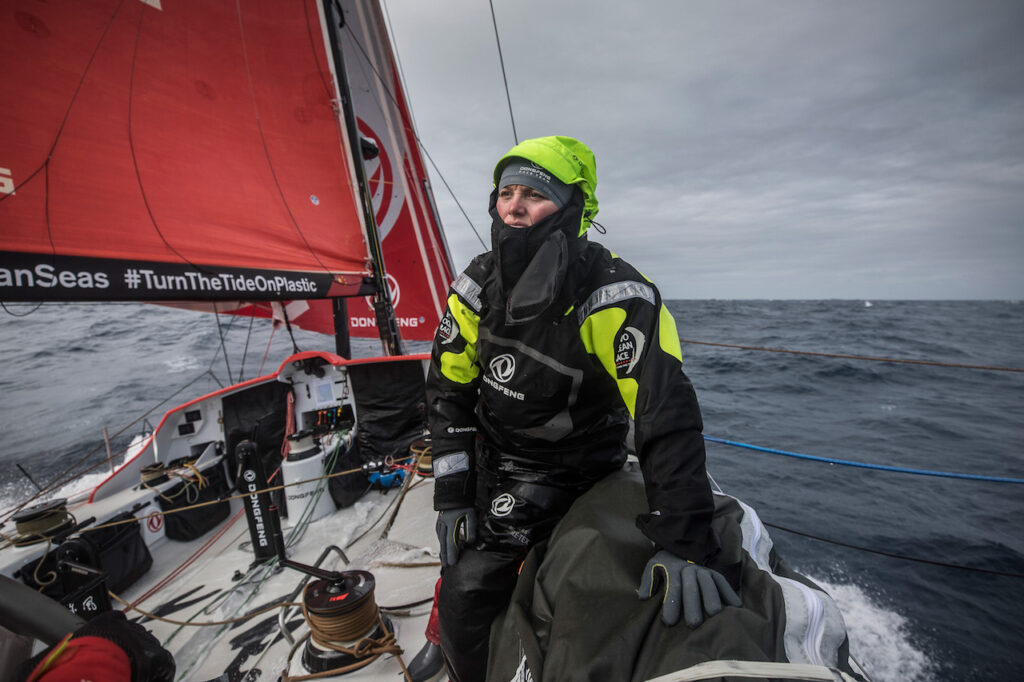 Photo courtesy of Martin Keruzore/VOR
Photo courtesy of Martin Keruzore/VORWith the boats now crossing the finish line in Itajaí, Brazil, it only seems right that we take a moment to stop and think about the tragedy that was Leg 7, and what it means for the 2017-18 Volvo Ocean Race in general. The VOR is, of course, an event that prides itself on its “extreme” nature. It intentionally sends its fleets off into some of the roughest waters on the planet. The boats also offer minimal protection for their crews, and the competitive nature of the event is such that the very idea of, say, bearing away to make things easier during a sail change is out of the question.
But what about when that same extremism starts getting people killed, as it did with Sun Hung Kai/Scallywag crewman John Fisher?
In fact, Fisher’s death represents the sixth death of a competitor since the VOR first began as the Whitbread in 1973, and the second fatality in the current VOR following the death of a commercial fisherman whose boat was hit by Vestas 11th Hour Racing just before the end of Leg 4.
Not only that, Leg 7, from Auckland, New Zealand, to Itajaí has been an especially brutal one in general. At this moment, team Sun Hung Kai/Scallywag’s boat is still in Chile where the crew diverted after Fisher was lost, while the hard-luck Vestas crew remains in the Falklands, figuring out what to do after the rig came down just 1,500 miles short of the finish.
Similarly, Spain’s Mapfre had to suspend racing for a few hours while it worked with its short team to repair an exploded mainsail, and Turn the Tide on Plastic, is nursing a damaged spreader toward what it hopes will be a fourth-place on Saturday. Even leg winner Team Brunel did not come away unscathed as it hit a submerged object just shy of the Horn that briefly put it out of commission as the boat’s steering had to be repaired in the middle of a Southern Ocean gale.
 Photo courtesy of Konrad Frost/VOR
Photo courtesy of Konrad Frost/VORNone of this, however, should cause anyone to in any way question the basic wisdom of an event like the VOR. Nor is there anything wrong with the race going on in the wake of Fisher’s death. For one thing, although I never met the man, I suspect he’d be outraged at the very idea of such a thing. For another, like it or not, death and very real danger are not just what makes the VOR what it is, they’re what truly make the VOR an example of humanity at its best.
It’s important to remember that there are races and then there are adventures, and while the VOR is very much a race, it is very much the latter as well. The VOR is an event that truly pushes the envelope in the best sense of the word, and that means not just physical hardship, but true physical danger. It’s not just silly YouTube stunts. It’s organization, it’s preparation, its seamanship of the highest order, it’s courage and it’s perseverance of a kind most can scarcely imagine. It’s getting up in the middle night when you’re already cold and wet to stand your watch, but that’s just what you do. It’s helping out your teammates when the going gets rough. Again, it’s nothing less than the best that humanity has to offer, and if that excellence happens to take place in the context of a sailboat race, then so be it.
At this moment there’s a lot of pain and soul-searching going on within the Volvo Ocean Race family. This is especially true for the crew of Sun Hung Kai/Scallywag. Nonetheless, for all that they must feel terrible, I very hope they return for Leg 8. There is nothing silly or feckless about the VOR. It’s certainly not just some kind of game. It’s life at its best, and as such in some crazy way it also somehow makes the world a better place for us all.
John Fisher was a brave man, by all accounts a great shipmate, and in taking on the Volvo Ocean Race, he was not only living life to the fullest, he was truly living a dream. The VOR is a race, but it’s also somehow much more, and in giving his life to this event Fisher most definitely did not give his life in vain.
April 2018

